|
Bristol Beaufort Mk.I

Airfix 1/72 scale
S
u m m a r y |
| Description and Catalogue Number: |
Airfix A04021 - Bristol Beaufort Mk.I |
| Scale: |
1/72 |
| Contents and Media: |
141 parts in grey injection moulded plastic; 18 parts in clear plastic; markings for two aircraft |
| Price: |
£17.99 EU Price (£14.99 Export Price) plus shipping available online from Hannants |
| Review Type: |
FirstLook |
| Advantages: |
High level of detail; crisp and fine surface textures; useful options including alternative flaps, poseable side hatch and armament. |
| Disadvantages: |
A small amount of flash. |
| Conclusion: |
Airfix has delivered another sweet little kit with their 1:72 scale Beaufort Mk.I. Detail is good, surface textures are restrained and crisp, options are useful and parts breakdown is clever. It would be great to see a similar new-tooled Airfix Fairey Battle. I hope that we see some of these scaled up to 1:48 scale too! Well done Airfix. You’re on a roll! |
Reviewed by Brett Green

The Bristol Beaufort (manufacturer designation Type 152) was a British twin-engined torpedo bomber designed by the Bristol Aeroplane Company, and developed from experience gained designing and building the earlier Blenheim light bomber. At least 1,180 Beauforts were built by Bristol and other British manufacturers.
The Australian Government's Department of Aircraft Production (DAP) also manufactured variants of the Beaufort. These are often known collectively as the DAP Beaufort. More than 700 Australian-built Beauforts saw service with the Royal Australian Air Force in the South West Pacific theatre, where they were used until the end of the war.
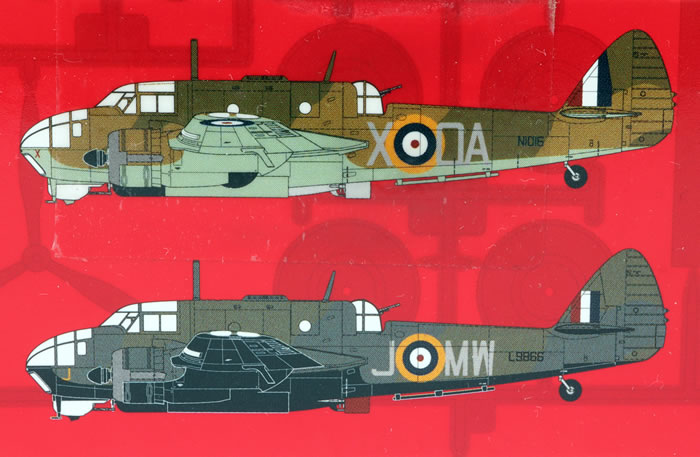
Beauforts first saw service with Royal Air Force Coastal Command and then the Royal Navy Fleet Air Arm from 1940. They were used as torpedo bombers, conventional bombers and mine-layers until 1942, when they were removed from active service and were then used as trainer aircraft until being declared obsolete in 1945.
Beauforts also saw considerable action in the Mediterranean; Beaufort squadrons based in Egypt and on Malta helped interdict Axis shipping supplying Rommel's Deutsches Afrikakorps in North Africa.
Although it was designed as a torpedo-bomber, the Beaufort was more often used as a medium day bomber. The Beaufort also flew more hours in training than on operational missions and more were lost through accidents and mechanical failures than were lost to enemy fire.
The Beaufort was adapted as a long-range heavy fighter variant called the Beaufighter, which proved to be very successful and many Beaufort units eventually converted to the Beaufighter.*
This all-new Airfix 1:72 Bristol Beaufort Mk.I comprises 141 parts in light bluish-grey plastic and 18 in clear. The model is packed in a cardboard box with a separate lid – a small detail perhaps but certainly preferable to end-opening.
The plastic is smooth and a little softer than the material used by other mainstream manufacturers. This makes the plastic easy to clean up, but you also need to be careful not to take chunks out of the kit parts when removing them from the sprues.
There is a small amount of fine flash to be removed from a few parts. There is also a raised ridge directly behind the opening of the turret. The instructions tell us to slice this off. It may be relevant to later variants.
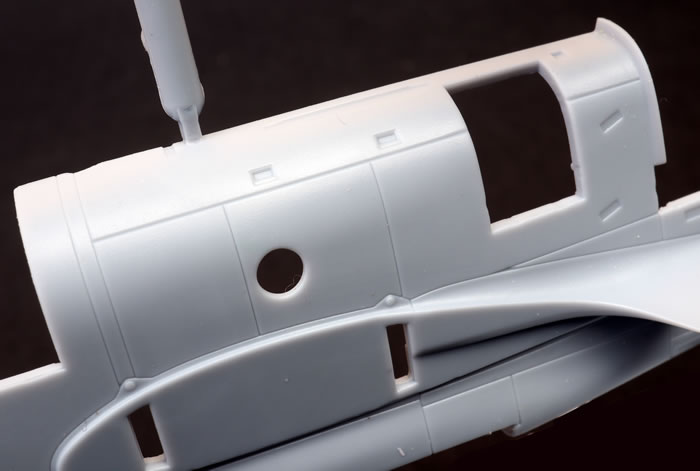
Surface details are crisp and fine. The recessed panel lines are right up there with the best I have seen in a new Airfix 1:72 scale kit. Recessed foot/hand holds and various raised bumps are present too.
The cockpit looks good on the sprues. A decal overlay adds dial detail to the instrument panel. All the main features are present but you’ll have to source your own harness straps. Eduard already has you covered there with a couple of detail sets already including the interior and canopy masks.
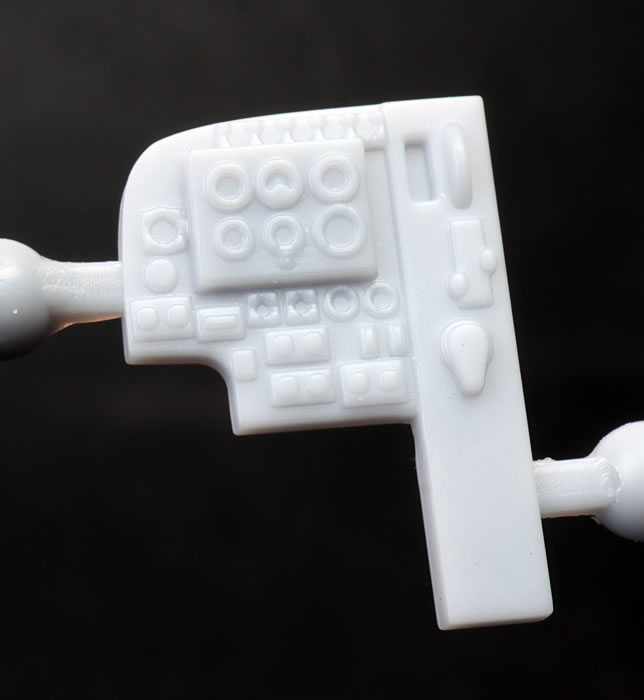
A nice pilot figure is supplied. He looks a bit soft in the massively enlarged photo but he looks good in real life.
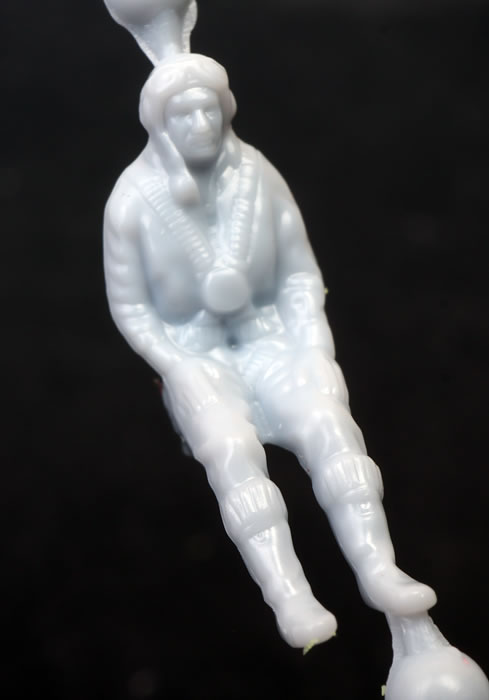
Some detail is moulded into the bomb bay. The doors may be sliced open to fit a torpedo and its dedicated mount.
The wheel wells and landing gear legs look good. Main wheels are bulged and flattened with smooth tread.
In addition to the torpedo, options include two styles of landing flaps, plus a machine gun for the open port side hatch.
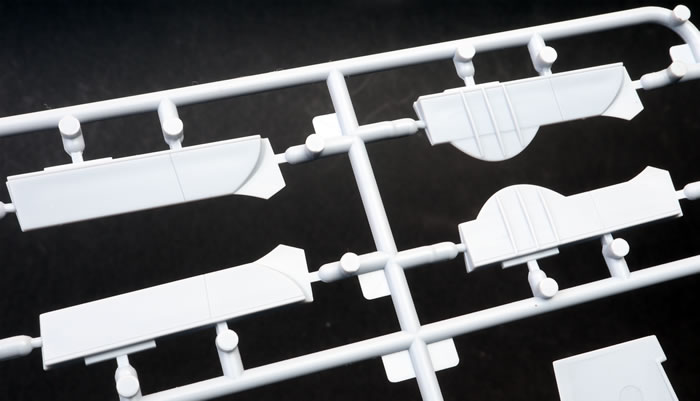
Two styles of turret are included but only one is used for the Mk.I.
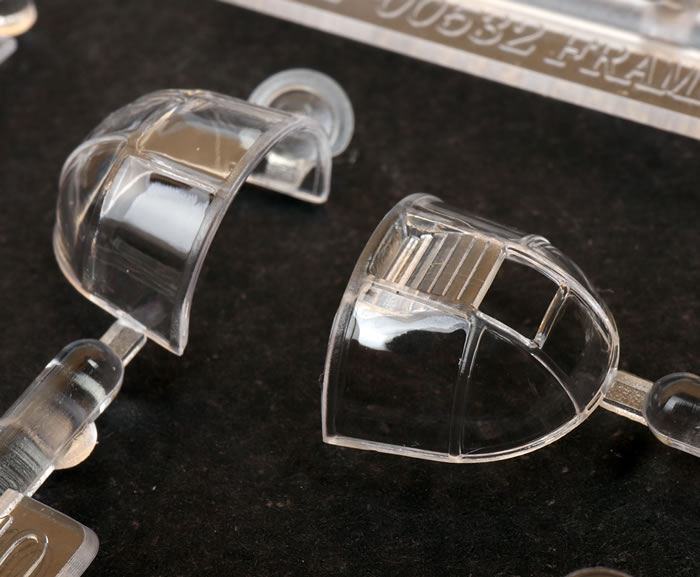
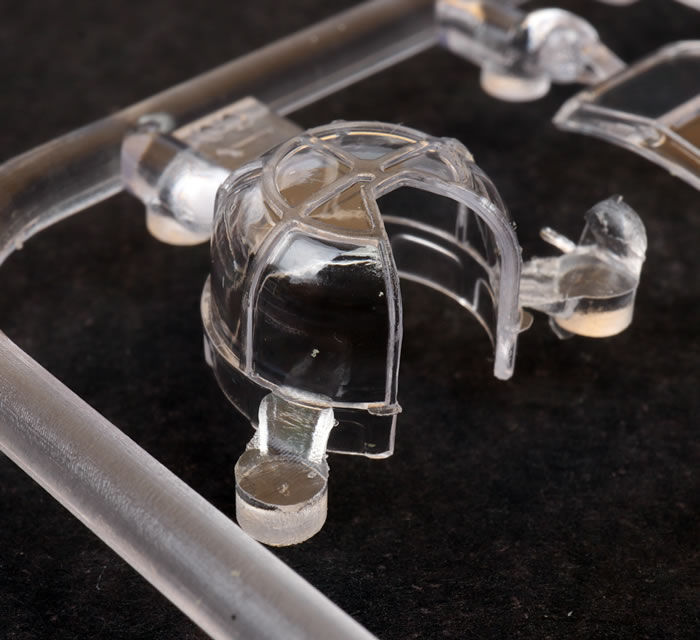
Kit engineering is thoughtful. The wings are broken down into port and starboard, top and bottom. Two wing spars double as bulkheads for the interior.
The ailerons and rudder are supplied as separate parts, as are the landing flaps. The flaps are designed to be fitted closed. Control surfaces are depicted with shallow scallops representing fabric texture. This is not usually my favourite thing but it is subtly done here.
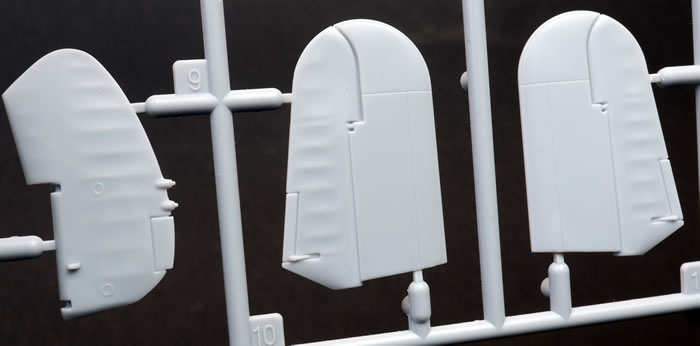
The engines are simple in terms of part numbers – only nine per side including cowls, exhausts and intakes – but the moulded detail is good. Braces are moulded with the cowl ring in a single part. This is a nice touch in an otherwise potentially fiddly area. Cowl flaps appear to be moulded slightly open.
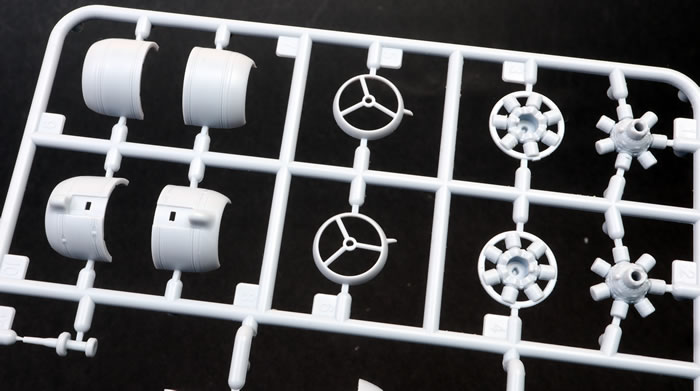
The nose glazings are supplied as four parts – the windscreen, starboard side windows, upper nose glazing and forward lower nose windows. A clear blister for the lower fuselage rear firing machine gun is also offered.
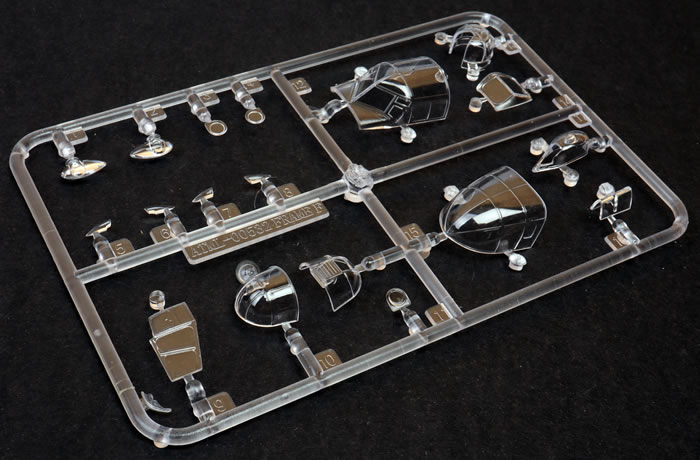
Pitot and aerials are separate parts, including a folded DF antenna.
Markings
Markings are offered for two aircraft:
-
Beaufort Mk.I, MW-J; L9866 - 217 Sqn. (Sgt John Bell Rutherford). February 1941 attack on Admiral Hipper - RAF St Eval, Cornwall. Finished in Extra Dark Sea grey, Dark Green, Night
-
Beaufort Mk.I, OA-X, N1016 - 22 Sqn. (F/O Kenneth Campbell VC). April 1941attack on Gneisenau - RAF St Eval, Cornwall. Finished in Dark Earth, Dark Green, Sky
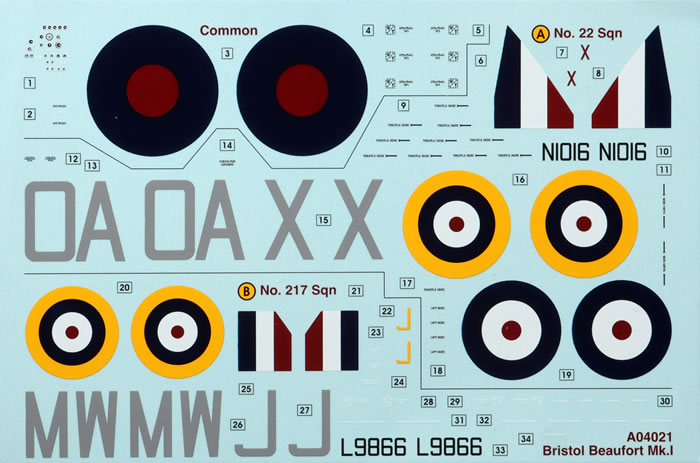
Decals are glossy in finish, with good colour saturation and registration.
Airfix has delivered another sweet little kit with their 1:72 scale Beaufort Mk.I.
Detail is good, surface textures are restrained and crisp, options are useful and parts breakdown is clever.
It would be great to see a similar new-tooled Airfix Fairey Battle. I hope that we see some of these scaled up to 1:48 scale too!
Well done Airfix. You’re on a roll!
Sample purchased by reviewer from Hannants.
Text and Images Copyright © 2021 by Brett Green
Page Created 7 April, 2021
Last updated
11 April, 2021
Back to HyperScale Main Page |
